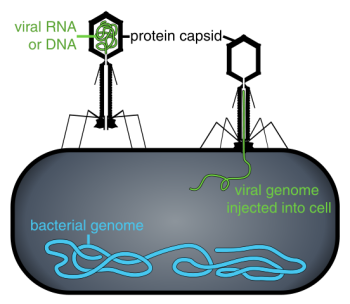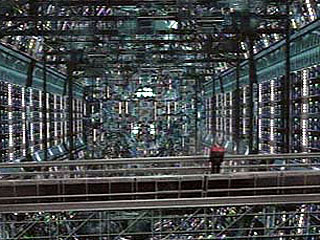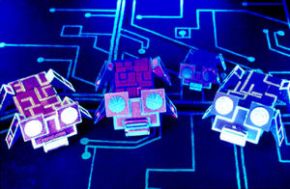Science and engineering topics appear in many movies – think of the gadgets in the James Bond series. Star Trek, Star Wars, and other long-standing science fiction series, of course, are full of futuristic transportation, infrastructure, devices and weapons.

The word “nanotechnology” was coined in 1974 by Norio Taniguchi1, and it began appearing in the media in the mid-1980’s. Hollywood took a while to catch up, but nanotechnology has appeared in a variety of films and TV shows. One of the more famous films is the 2002 Spider-Man. Peter Parker, upon meeting Dr. Norman Osborn for the first time, says that he is a fan of Dr. Osborn’s work on nanotechnology.

Sadly, we never get to hear what this nanotechnology research was all about. But as Dr. Osborn’s experimental technology later transforms him into the villainous Green Goblin, it clearly had a dark side.
Most of the time, unfortunately, nanotechnology shows up in film as force for evil. A good example is Star Trek: First Contact (1996). In this movie, the villainous Borg attempt to take over Earth and assimilate all of its citizens into their collective Hive Mind, by the injection of “nanoprobes” into their victims. These nanoprobes latch onto blood cells and re-write the victim’s DNA.

How does the real science match up with these fictional plotlines? It is true that scientists can put DNA or RNA on nanoparticles and use these introduced nucleic acids to control gene expression in living cells.2,3 The general idea is that the introduced nucleic acid will find its complementary DNA or RNA target in the cell, bind to it, and turn off gene expression by blocking anything else from binding there. You can see that this could be a force for good, if “bad” genes are turned off.
Recently, biologists have also shown that they can, to some extent “rewrite” the DNA in plants.4 Basically, breaks in the DNA double helix can be produced, and new genetic material can then be stitched in as the cell repairs the DNA. How far this can go is a hot topic in many research labs around the world. So far, nanotechnology has not played much of a role in this line of research – but you can see how it might!
But aside from nanotechnology, we already have a natural version of the Borg’s “nanoprobes”: viruses. Viruses are naturally occurring nanoscale objects that insert their own DNA or RNA into host cells, and use the cells’ machinery to replicate themselves. There are medical applications being developed to take advantage of this property of viruses. For example, research is underway to try to use viruses to destroy cancer cells5,6

Whether manufactured like “nanoprobes,” or found in nature like viruses, nanotechnology has great potential in a variety of applications in biology and medicine. These applications include drug delivery, new ways to image cells, and chemical sensing. The promises of nanotechnology are many; yet the dangers, as amplified by examples from movies and TV, might loom larger in the public mind. One of our goals as the Center for Sustainable Nanotechnology is to understand the fundamentals of the interactions between nanoparticles and living systems (cells and organisms). Only with deep understanding will we be able to counteract any potential Borg scenarios!

Interested in reading more about the intersection of science and film? Check out these resources:

- Science in Movies: FlickClip
- TCM: Introduction to Science in the Movies
- The Sloan Film Summit 2014, with a theme of Science and the Art of Storytelling
- National Science Teacher’s Association: Blick on Flicks
- Wikipedia: Nanotechnology in Fiction
REFERENCES (subscriptions needed for some full articles)
- http://www.nano.gov/timeline
- Rosi NL, Giljohann DA, Thaxton CS, Lytton-Jean AK, Han MS, Mirkin CA.Oligonucleotide-modified gold nanoparticles for intracellular gene regulation. Science 2006; 312(5776):1027-30.
- Zheng D, Giljohann D, Chenc D, Massich M, Wang X-Q, Iordanovc H, Mirkin C, Paller A. Topical delivery of siRNA-based spherical nucleic acid nanoparticle conjugates for gene regulation. PNAS 2012; 109(30): 11975–11980.
- Perkel J. Rewriting the Genome: Even DNA Needs an Editor. Science 2015; online ahead of print.
- Thirukkumaran C, Morris D. Oncolytic viral therapy using reovirus. Methods Mol Biol 2009; 542:607-34.
- Mahoney DJ, Stojdl DF, Laird G. Can Viruses Treat Cancer? Scientific American 2014; 311(5):54-59.
